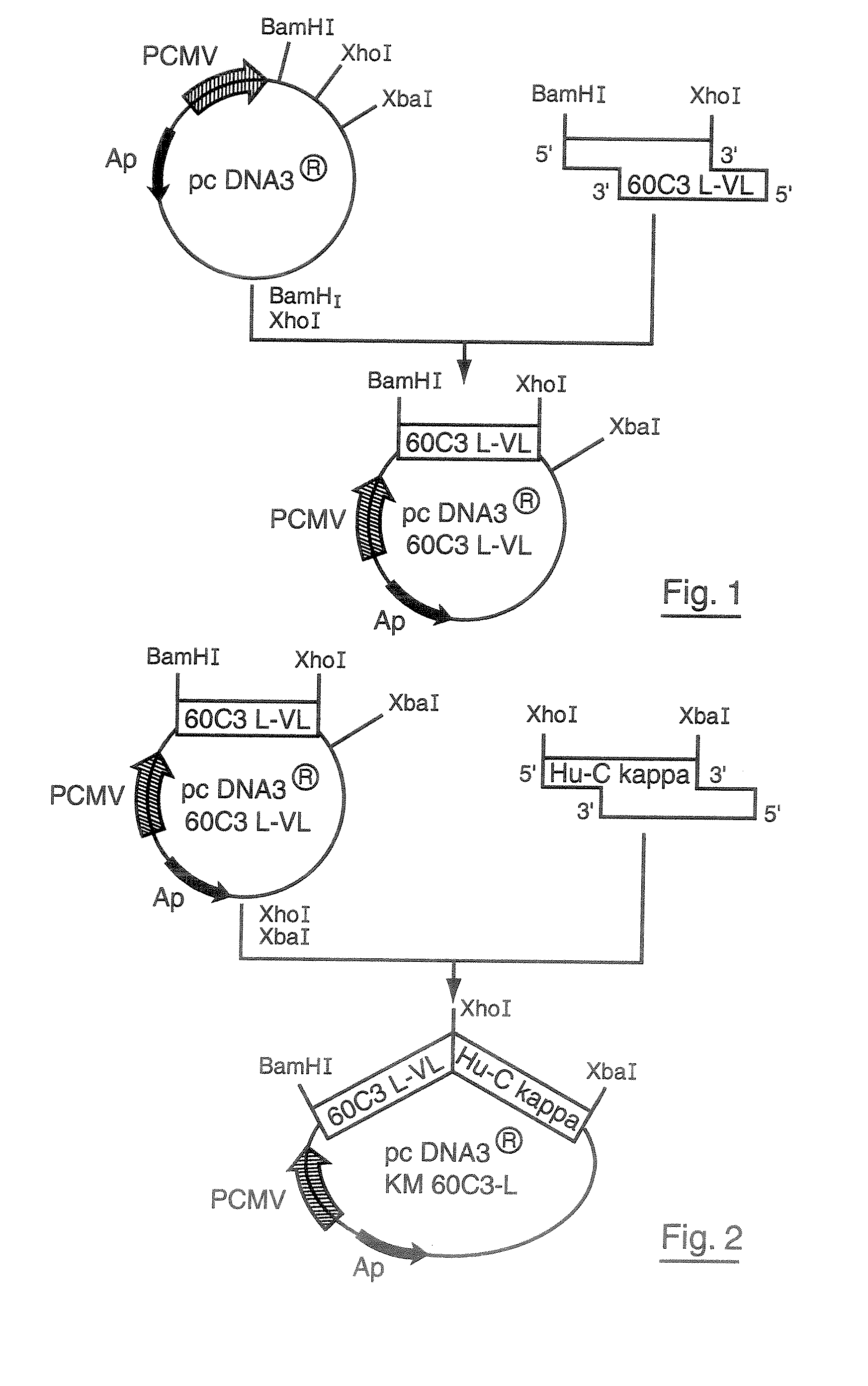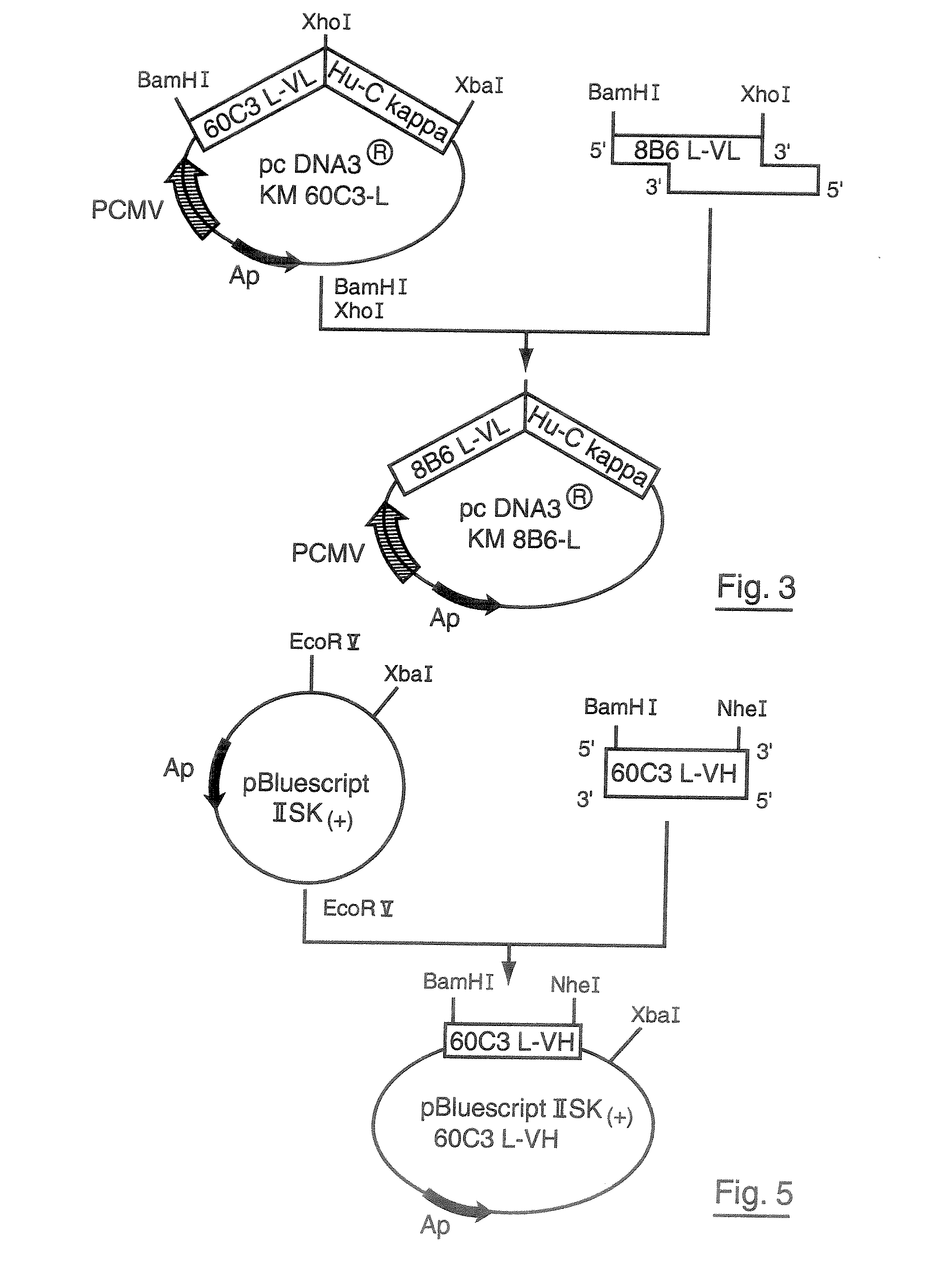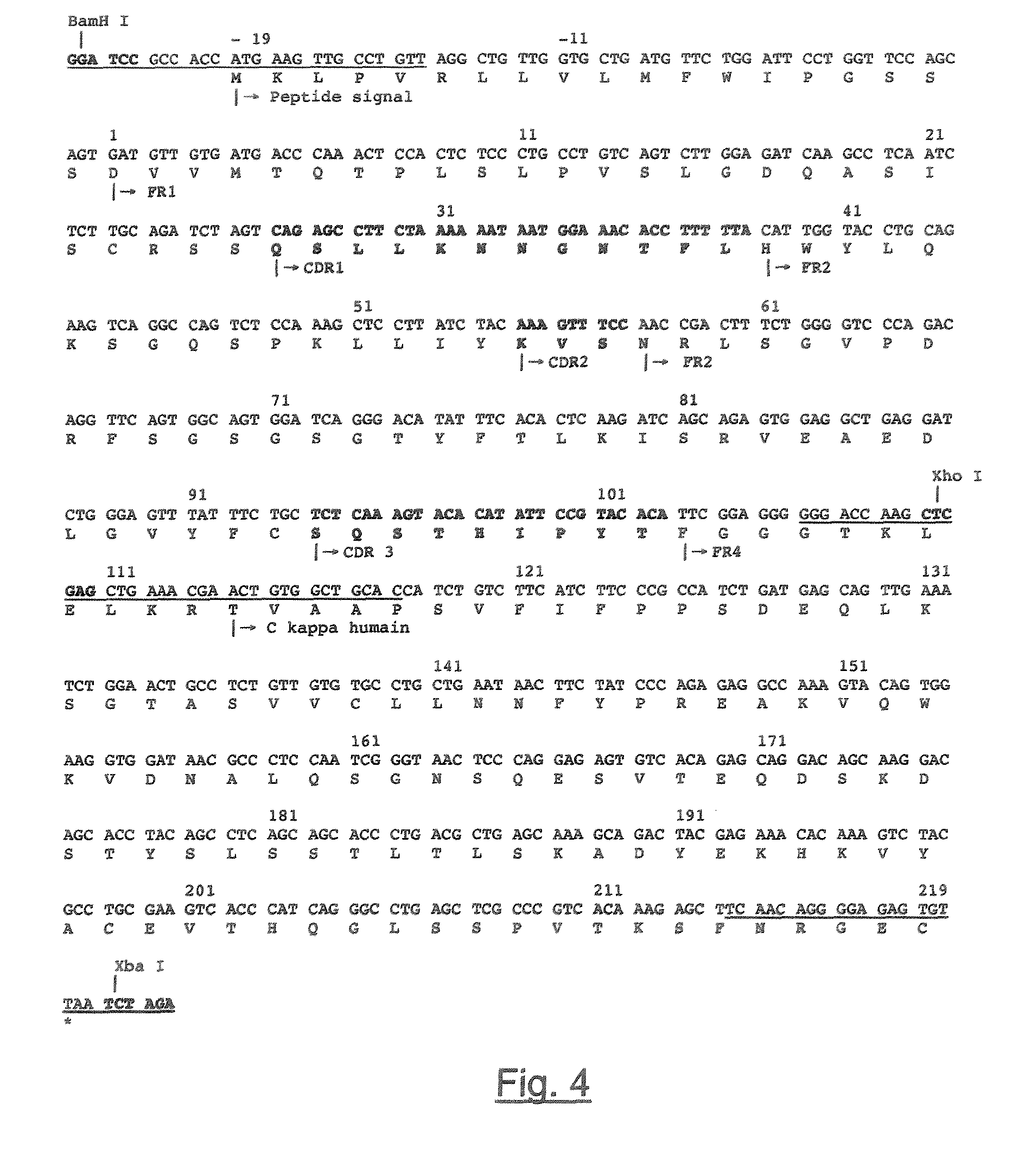Use of monoclonal antibodies specific to the o-acetylated form of gd2 ganglioside for treatment of certain cancers
a technology of gd2 ganglioside and monoclonal antibodies, which is applied in the field of use of monoclonal antibodies specific to the o-acetylated form of gd2 ganglioside for the treatment of certain cancers, can solve the problems of limited recruitment ability, and achieve the effects of not causing nerve toxicity, not easy to handle, and limited clinical immunotherapy developmen
- Summary
- Abstract
- Description
- Claims
- Application Information
AI Technical Summary
Benefits of technology
Problems solved by technology
Method used
Image
Examples
Embodiment Construction
Production of Artificially Modified KM8B6 Antibodies
[0073]1. Preparation of cDNA Coding for the Variable L-VL Region of the Mouse Monoclonal Antibody 60C3
[0074](a). Extraction of Total RNA from the 60C3 Hybridoma, Producing the Monoclonal 60C3 Antibody.
[0075]The total RNA is extracted from 106 60C3 hybridoma cells in exponential growth phase by means of a RNAble reagent (EUROBIO, Courtaboeuf, France) according to the supplier's directions. The total RNA concentration is determined by measuring the optical density at 260 nm.
[0076](b). Obtaining the Nucleotide Sequence of 60C3 L-VL cDNA
[0077]Gene amplification of the cDNA coding for the 60C3 L-VL variable region was obtained from the messenger RNAs by RACE-PCR to provide the nucleotide sequence coding for the signal peptide (L) combined with its variable region (VL). This amplification was carried out using the SMART™ RACE cDNA Amplification kit obtained from the company BD Biosciences (San Jose, Calif., USA) according to the supplier...
PUM
| Property | Measurement | Unit |
|---|---|---|
| Van der Waals' coefficient b | aaaaa | aaaaa |
| Fraction | aaaaa | aaaaa |
| Fraction | aaaaa | aaaaa |
Abstract
Description
Claims
Application Information
 Login to View More
Login to View More - R&D
- Intellectual Property
- Life Sciences
- Materials
- Tech Scout
- Unparalleled Data Quality
- Higher Quality Content
- 60% Fewer Hallucinations
Browse by: Latest US Patents, China's latest patents, Technical Efficacy Thesaurus, Application Domain, Technology Topic, Popular Technical Reports.
© 2025 PatSnap. All rights reserved.Legal|Privacy policy|Modern Slavery Act Transparency Statement|Sitemap|About US| Contact US: help@patsnap.com



